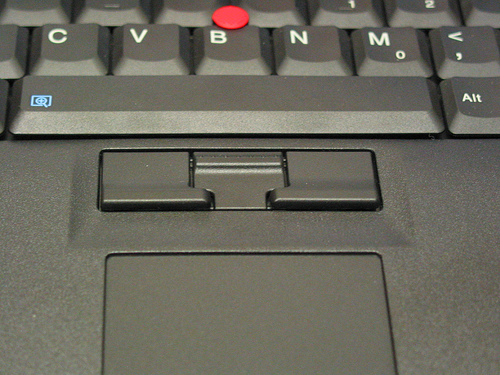In the tech world, mastering mouse and keyboard is learning to hold the sword. Central to computers is creating text. The more efficient you are with text the more productive you are at work.
Taming the mouse
As trivial as the mouse may seem it is still one of the most important devices as you use it intensively while doing computer work. You should be very careful when selecting a mouse, a bad one will slow you down more than you realise. Like driving with a dirty windshield - possible indeed but not so efficient.#1 Be picky about your mouse
Don't just buy the most expensive or fancy one. There are small and big mice, heavy and light ones, those with lots of buttons and others minimalistically designed. Try out them all and find out which one gives you the best control.I personally prefer a wired mouse since batteries make it heavy and awkward, a heavy mouse feels for like it has to lifted to get it moving.
A decent mouse should have a scroll wheel and back & forward buttons, these save a lot of time while web browsing and reading text.
#2 Clean bottom and surface
In the hospital there are ethanol hand-cleansing bottles all over, perfect for this task. If not you can scratch the crustified dust with a thin pen or your nails.
Older mice have a rubber ball inside a small "ball house" where movement is detected with 2-3 smaller wheels touching the ball. These also need to be cleaned.
#3 Use the scroll wheel
On the top of most mice there is a scroll wheel which can do much more than just scroll up and down. With some you can even scroll horizontally by bending it right or left. Yet others allow pressing the scroll button and the mouse pointer will change to a "scroll pointer" so that you can easily move around a big document.#4 Use the ctrl+scroll button combination
The most useful function of the scroll wheel is the zoom function, done by holding
ctrl
while moving the wheel.
This is a universal shortcut so that you can zoom while in your web browser, viewing a Word document, a PDF file etc.
From mouse to keyboard
The invention of the mouse was a game changer and a crucial step for making the computer (C) revolution a personal computer (PC) one - bringing computers to the common home office.In it's easiness lies also a deception for it is so much easier to reach for the mouse than it is to learn the more efficient keyboard shortcuts. A mouse is excellent for drawing and clicking links in the web-browser but most other tasks you can do faster with the keyboard.
 Not only is the keyboard faster but each time you reach out for the mouse you are pushing the break pedal and inviting a few minutes of procrastination.
Not only is the keyboard faster but each time you reach out for the mouse you are pushing the break pedal and inviting a few minutes of procrastination.For this reason the brilliant IBM Thinkpad was designed with TrackPoint, a small pin in the middle of the keyboard to simulate a mouse. There are lab-verified statistics that the TrackPoint is 15% more efficient than the traditional touchpad. Your goal is to maximize the time your hands are spent on the keyboard, eliminating unneccessary 'mouse trips'.
My recommendation thus: unplug your mouse 10 minutes a day and force your self to learn to get by without it!
Teaching by example
Universal keyboard shortcuts
As shown above there is a lot of convenience in using keyboard shortcuts instead of the mouse. It's not about saving a few seconds here and there or finishing tasks faster but rather being able to stay focused and finishing tasks uninterrupted. Avoiding small and unnecessary interruptions is by far the best way to avoid being distracted. Every little distraction is an opportunity for procrastination.Not surprisingly, most shortcuts apply to text editing as while writing you really want to have your fingers on the keyboard as much as possible.
Shortcuts are either built into the operating system (commonly same wether it's Windows, Apple OS or Linux) or specific for applications, e.g. for quicker browsing and manipulating tabs in the web-browser.
Some common and universal shortcuts, must know!
ctrl+z Undo action (or text edit)ctrl+y Redo action
ctrl+f Find
alt+tab Change active window
win+d Minimise all windows and show desktop
I highly recommend that you learn these shortcuts and get familiar with the more common ones (see links below).
As you are using the web-browser every day I recommend that you learn these too - the absolutely crucial shortcut to know is alt+d to focus the search bar.
Then check out the list of shortcuts for your software most commonly used, e.g. Word, Excel and especially Photoshop where not learning shortcuts is just crazy!
One last tip - the Google apps (Gmail, Drive, Plus...) all use shift+? to popup a list of keyboard shortcuts for each application!
After training some, you will use keyboard shortcuts without thinking, naturally. That is the point that you will look back and wonder how you ever managed without them!
See also
- Keyboard-Shortcut.com "Reclaim hours of your life"... learn even more about keyboard shortcuts.
- Going Commando - Put Down The Mouse Great discussion about putting away the mouse for increased productivity

No comments:
Post a Comment